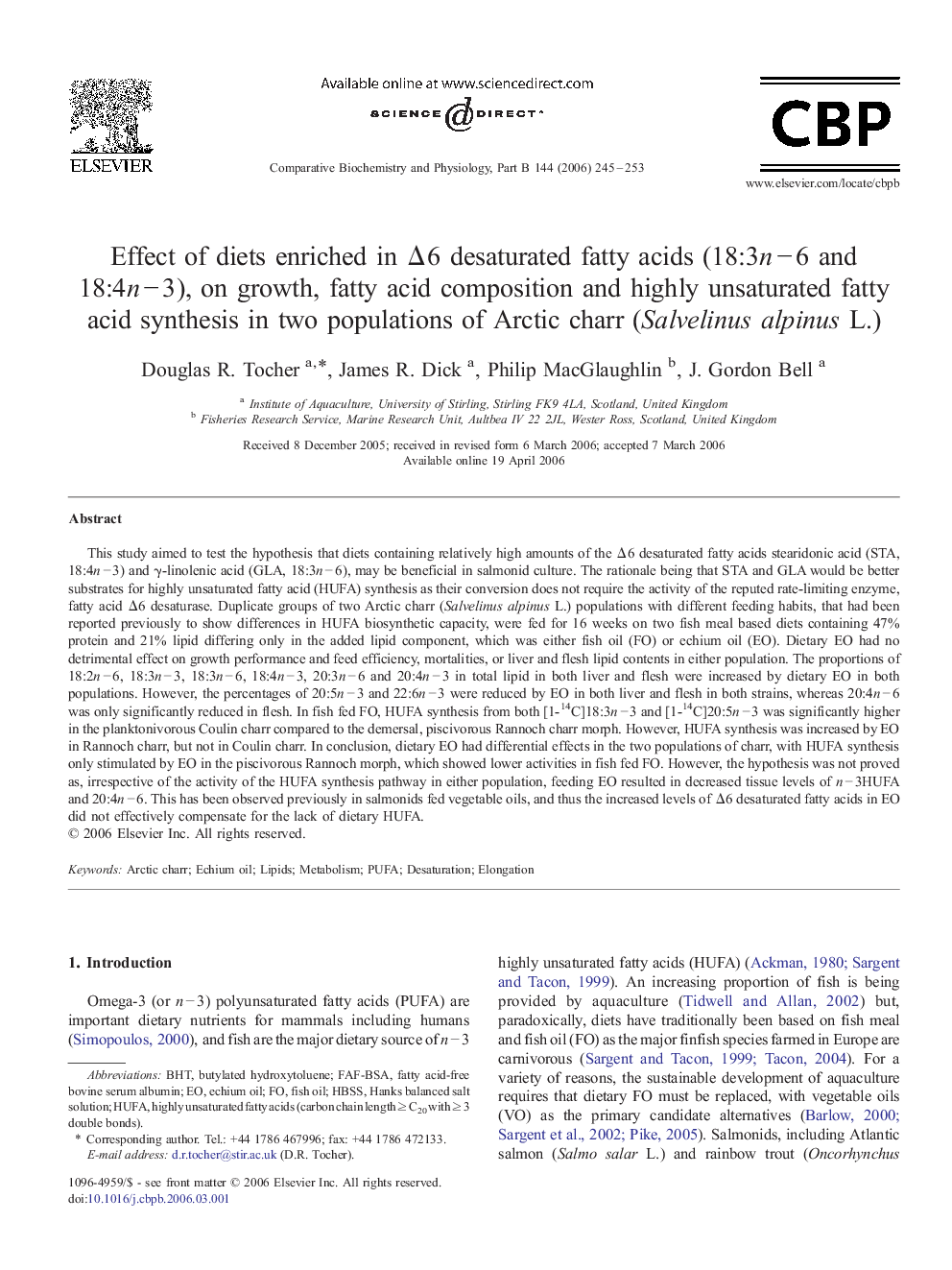| Article ID | Journal | Published Year | Pages | File Type |
|---|---|---|---|---|
| 1976346 | Comparative Biochemistry and Physiology Part B: Biochemistry and Molecular Biology | 2006 | 9 Pages |
This study aimed to test the hypothesis that diets containing relatively high amounts of the Δ6 desaturated fatty acids stearidonic acid (STA, 18:4n − 3) and γ-linolenic acid (GLA, 18:3n − 6), may be beneficial in salmonid culture. The rationale being that STA and GLA would be better substrates for highly unsaturated fatty acid (HUFA) synthesis as their conversion does not require the activity of the reputed rate-limiting enzyme, fatty acid Δ6 desaturase. Duplicate groups of two Arctic charr (Salvelinus alpinus L.) populations with different feeding habits, that had been reported previously to show differences in HUFA biosynthetic capacity, were fed for 16 weeks on two fish meal based diets containing 47% protein and 21% lipid differing only in the added lipid component, which was either fish oil (FO) or echium oil (EO). Dietary EO had no detrimental effect on growth performance and feed efficiency, mortalities, or liver and flesh lipid contents in either population. The proportions of 18:2n − 6, 18:3n − 3, 18:3n − 6, 18:4n − 3, 20:3n − 6 and 20:4n − 3 in total lipid in both liver and flesh were increased by dietary EO in both populations. However, the percentages of 20:5n − 3 and 22:6n − 3 were reduced by EO in both liver and flesh in both strains, whereas 20:4n − 6 was only significantly reduced in flesh. In fish fed FO, HUFA synthesis from both [1-14C]18:3n − 3 and [1-14C]20:5n − 3 was significantly higher in the planktonivorous Coulin charr compared to the demersal, piscivorous Rannoch charr morph. However, HUFA synthesis was increased by EO in Rannoch charr, but not in Coulin charr. In conclusion, dietary EO had differential effects in the two populations of charr, with HUFA synthesis only stimulated by EO in the piscivorous Rannoch morph, which showed lower activities in fish fed FO. However, the hypothesis was not proved as, irrespective of the activity of the HUFA synthesis pathway in either population, feeding EO resulted in decreased tissue levels of n − 3HUFA and 20:4n − 6. This has been observed previously in salmonids fed vegetable oils, and thus the increased levels of Δ6 desaturated fatty acids in EO did not effectively compensate for the lack of dietary HUFA.
